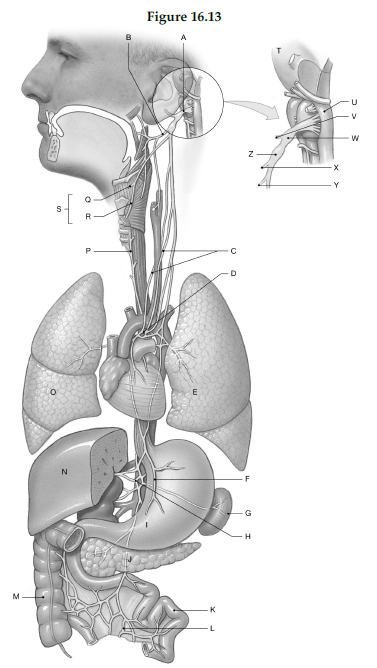Using the figure below, identify the labeled part.

1) Label A: ______________________________
2) Label B: ______________________________
3) Label C: ______________________________
4) Label D: ______________________________
5) Label E: ______________________________
6) Label F: ______________________________
7) Label G: ______________________________
8) Label H: ______________________________
9) Label I: ______________________________
10) Label J: ______________________________
11) Label K: ______________________________
12) Label L: ______________________________
13) Label M: ______________________________
14) Label N: ______________________________
15) Label O: ______________________________
16) Label P: ______________________________
17) Label Q: ______________________________
18) Label R: ______________________________
19) Label S: ______________________________
20) Label T: ______________________________
21) Label U: ______________________________
22) Label V: ______________________________
23) Label W: ______________________________
24) Label X: ______________________________
25) Label Y: ______________________________
26) Label Z: ______________________________
1) Vagus nerve (N X)
2) Superior pharyngeal branch
3) Cardiac branches
4) Cardiac plexus
5) Left lung
6) Anterior vagal trunk
7) Spleen
8) Celiac plexus
9) Stomach
10) Pancreas
11) Small intestine
12) Hypogastric plexus
13) Colon
14) Liver
15) Right lung
16) Recurrent laryngeal nerve
17) Internal branch
18) External branch
19) Superior laryngeal nerve
20) Pons
21) Medulla oblongata
22) Auricular branch to external ear
23) Superior ganglion of vagus nerve
24) Pharyngeal branch
25) Superior laryngeal nerve
26) Inferior ganglion of vagus nerve
You might also like to view...
The ________ gland empties into the oral cavity at the level of the second upper molar
A) submaxillary B) submandibular C) parotid D) sublingual E) vestibular
Define tissue
What will be an ideal response?
An endogenous pyrogen can be released by ____ in the body
a. muscle cells. b. pathogens. c. platelets. d. erythrocytes. e. neutrophils.
The white matter of the spinal cord is surrounded by its grey matter.
Answer the following statement true (T) or false (F)